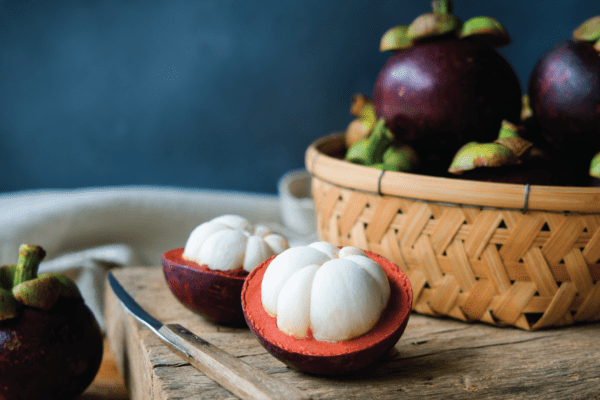When it first hit menus, avocado toast wasn’t as loved as is today. It was new, strange, and unexpected. It should be no surprise that the flavors we’re watching today are currently perceived the same way.
While we can’t say for certain what will die at inception and what will make it to ubiquity, these are 3 of the top flavors we have our eyes on right now.
Yuzu Kosho
Yuzu, the fragrant, tart, citrus fruit found throughout Asia, has grown over 40% on U.S. menus in just the past 4 years. Haiku, our machine learning engine, predicts it will grow another
23% in the next 4, reaching 5% menu penetration. Combine that growing ingredient with on-trend fermentation techniques and you have yuzu kosho.
This Japanese condiment features yuzu peel, fresh chile peppers, and salt, which are allowed to ferment together to create a spicy, citrusy sauce or paste that’s packed with umami. Yuzu kosho has traditionally been used in Japanese hot pot stews and miso soups, but the possibilities are practically endless, particularly because various recipes or retail products have differing flavor profiles. Use it on sushi or meats, mix it into salad dressings or other condiments, or follow the lead of Japanese snack makers and use it as a chip flavoring.
Mangosteen
No, mangosteen isn’t the full name for mango. While they’re both tropical fruits, they’re completely different species. Mangosteens are prized for their unique sweet, tangy, juicy, floral flavor. “If you’ve never tasted a mangosteen, then you’ve never tasted the most exquisite fruit of the tropics,” declared National Geographic, which noted that the fruit earned its title “the queen of fruits” after it was rumored that Queen Victoria would grant knighthood to anyone who would bring her one.
If they’re so delicious, why aren’t they common here? It turns out that mangosteens are fickle—they don’t like to grow outside of their preferred tropical zones and they’re unpredictable even when they do. They start spoiling immediately after they’re harvested, not to mention the fact that they were banned from importation into the U.S. until a decade ago. But now that the ban has been lifted and farmers have started to cultivate them in Puerto Rico and the Caribbean, they are starting to show up on a small number of U.S. menus, mainly in juices and smoothies.
Ashwagandha
The search is always on for the next big superfood. One ingredient you should follow as it makes its way from the medicinal/supplement aisle to food products and menu items is ashwagandha. The root of this plant has long been used in Ayurveda, the alternative medicine system that developed in India and has now spread around the world. Its use in the U.S. has been growing because of a wider interest in adaptogens, which are said to help the body adapt to stress.
While ashwagandha is on few menus currently, some cutting-edge juice bars and functional food-focused cafes have started to add ashwagandha powder to elixirs and smoothies. Moon Juice bars in L.A. feature a Golden Serene drink made with ashwagandha and
ingredients like alkaline water and activated almonds.
New and interesting today, these flavors very well could be on menus all over in just a few years. Don’t let the unknown scare you from trying, or you could very well miss the next big thing. (Did you ever imagine avocado toast going for upwards of $20?) Don’t forget to review the first 3 flavors to watch and keep an eye out for part 3!









